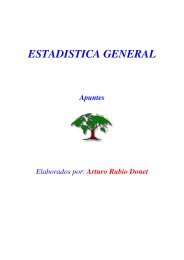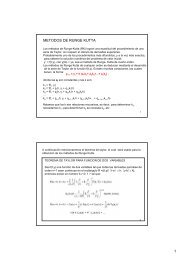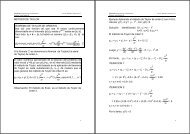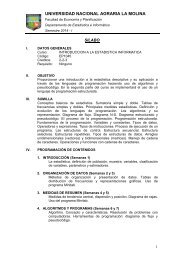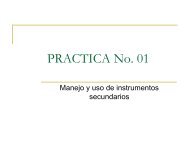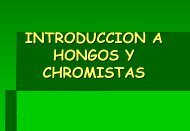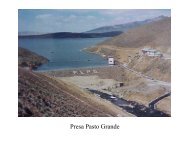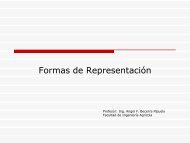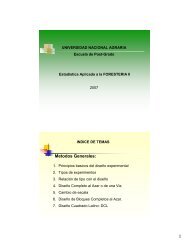MF2037 Evaluating Feed Components and Finished Feeds - K-State ...
MF2037 Evaluating Feed Components and Finished Feeds - K-State ...
MF2037 Evaluating Feed Components and Finished Feeds - K-State ...
Create successful ePaper yourself
Turn your PDF publications into a flip-book with our unique Google optimized e-Paper software.
4ties, unsaponifiable materials (M.I.U.), <strong>and</strong> free fattyacids (FFA). FFA content should not exceed 15percent.Additionally, NIR technology works well formeasuring oil content in oilseed crops (e.g., soybeans),corn, <strong>and</strong> on complete feeds.FiberCrude fiber includes the materials that are indigestibleto humans <strong>and</strong> non-ruminant animals. It is definedas the material that is insoluble in dilute acid <strong>and</strong> dilutealkali under specified conditions. Crude fiber is used asan index of an ingredient’s feeding value since materialshigh in fiber are typically low in nutritional value.MineralsMineral analysis procedures are described in theNational <strong>Feed</strong> Ingredient Association’s (NFIA, 1991)Laboratory Methods Compendium, Volume I.Calcium constitutes about 2 percent of the bodyweight <strong>and</strong> is important for bones, teeth, <strong>and</strong> musclecontraction <strong>and</strong> relaxation, especially the heartbeat; hasa role in the transmission of nerve impulses; is necessaryfor blood clotting; <strong>and</strong> activates a number ofenzymes.Phosphorus is closely associated with calcium, thus,a deficiency or overabundance of one will interferewith the utilization of the other. Phosphorus is involvedwith bone formation <strong>and</strong> maintenance, teeth development,milk secretion, <strong>and</strong> building muscle tissue; it isan essential element in genetic material, metabolicfunctions, <strong>and</strong> osmotic <strong>and</strong> acid-base balance.Magnesium interacts with calcium <strong>and</strong> phosphorus.If extremely low, magnesium will cause calcium to bedeposited in soft tissues forming calcified lesions. Anexcess of magnesium upsets calcium <strong>and</strong> phosphorusmetabolism.Sodium helps control the osmotic pressure <strong>and</strong> acidbasebalance in body fluids (upon which depends thetransfer of nutrients to the cells <strong>and</strong> removal of wastematerial from cells). Sodium is associated with musclecontraction <strong>and</strong> nerve function.Pepsin DigestPepsin digest is a procedure used to determine theprotein digestibility of animal by-product meals.Animal by-product meal is processed under extremetemperature conditions that can cause the proteins tobecome denatured <strong>and</strong> indigestible. Results of a pepsindigest analysis are usually reported as a percentage ofpepsin indigestible residue or percent of crude proteinthat is pepsin indigestible. The AFIA <strong>Feed</strong> IngredientGuide II lists the following recommendations foranimal by-product meals:■ Poultry Feathers. Not less than 75 percent ofcrude protein should be pepsin digestible.■ Meat Meal. Not more than 14 percentindigestible residue <strong>and</strong> not more than 11percent of crude protein should be pepsinindigestible.■ Meat <strong>and</strong> Bone Meal. Not more than 14percent indigestible residue <strong>and</strong> not more than11 percent of crude protein should be pepsinindigestible.UreaseUrease is an enzyme (present in soybeans) that actson urea to produce carbon dioxide <strong>and</strong> ammonia.Urease is controlled by heating to denature the enzyme,<strong>and</strong> as such, is analyzed in soybean meal to assess if ithas been properly processed.MicroscopicAll microscopic identification is based upon relatingthe items seen to known material. Through the use oflow magnification (8 to 50 times) materials are examined<strong>and</strong> identified based on physical characteristicssuch as shape, color, particle size, softness, hardness,<strong>and</strong> texture. <strong>Feed</strong> microscopy is a useful method foridentifying impurities/contaminants <strong>and</strong> evaluating thequality of incoming ingredients. It also serves as auseful method for identifying missing ingredients infinished feed.M.I.U.M.I.U. st<strong>and</strong>s for moisture, impurities, <strong>and</strong>unsaponifiable material. Fat sources should be evaluatedfor these components <strong>and</strong> should not exceed thefollowing levels: moisture less than or equal to1 percent, impurities less than or equal to .5 percent,unsaponifiable material less than or equal to 1 percent.BrixBrix is a term commonly used to indicate the sugar(sucrose) content of molasses. This analysis is performedbased on the optical properties of the molassesusing a refractometer. Brix is expressed in degrees <strong>and</strong>is closely related to percent sucrose. The AFIA <strong>Feed</strong>Ingredient Guide II specifies a Brix reading of 79.5degrees.



